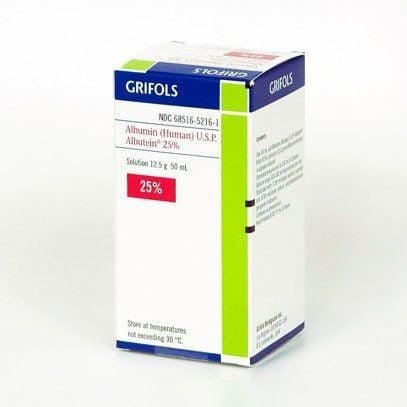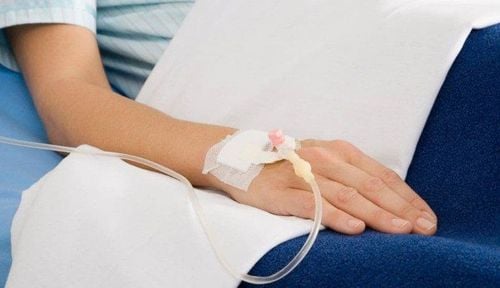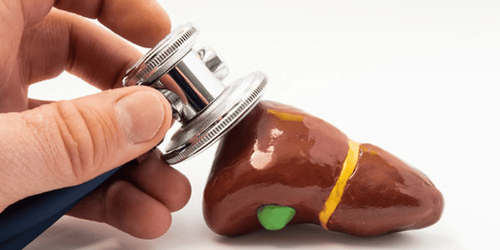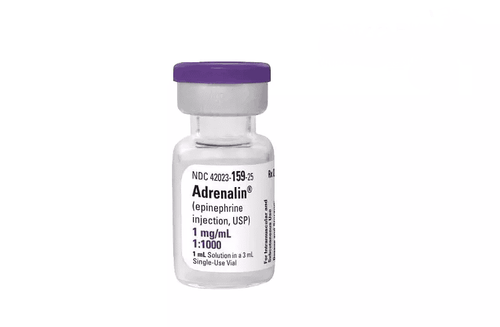This is an automatically translated article.
The article was professionally consulted by Specialist Doctor I Huynh Kim Long - Emergency Resuscitation Doctor - Emergency Resuscitation Department - Vinmec Da Nang International General Hospital.Traumatic shock is the leading cause of death after traumatic brain injury. Most cases of shock occur when there is a lot of blood loss or pain from an accident. Therefore, first aid for traffic accidents is very important because it reduces the danger to the accident victims.
1. What is traumatic shock?
Shock is a state of tissue hypoperfusion with various manifestations, rapidly leading to multi-organ failure. In particular, traumatic shock is a state of shock caused by blood loss or pain due to fracture, clinically manifested by signs of blue skin, cold, pale mucous membranes, irritability. In trauma, blood loss is the primary cause of shock. In addition, there are other factors such as: pneumothorax, spinal cord injury... Traumatic shock is the second leading cause of death after traumatic brain injury.Traumatic shock is divided into 4 levels:
Grade I: Blood loss < 750ml, accounting for less than 15% of total body blood volume, heart rate less than 100 beats/minute, normal blood pressure, respiratory rate from 14- 20 beats/min, normal or slightly increased pulse pressure Grade II: Blood loss from 750ml - 1000ml, accounting for 15-30 % of total blood volume, heart rate greater than 100 beats/min, normal blood pressure, respiratory rate from 20-30 times/minute, pulse pressure decreases Grade III: Blood loss is from 1500-2000ml, accounting for 30-40% of total blood volume, heart rate is greater than 120 times/minute, blood pressure is reduced, breathing rate is 30-40 times times/min, pulse pressure drops sharply. Patient in a state of excitement and confusion Grade IV: Blood loss greater than 2000 ml, accounting for more than 40% of total body blood volume, heart rate greater than 140 beats/min, blood pressure drop sharply, rapid breathing rate large more than 35 times/min, pulse pressure drops sharply. The patient is now in a state of confusion, lethargy, and unawareness.
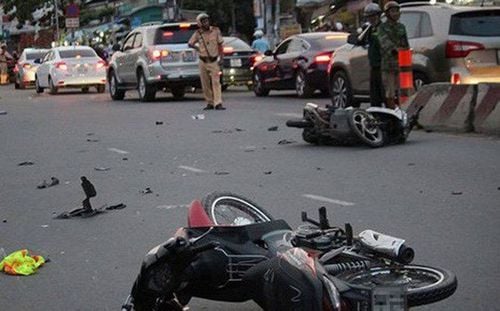
2. Causes and signs of traumatic shock
The cause of shock from a traffic accident is mainly that the person in the accident has lost too much blood due to intra-abdominal bleeding such as bleeding in the pleural cavity, broken bones, vascular wounds.In addition, the victim can also go into shock due to extreme pain because of broken bones, chest trauma, heart injury or various other injuries combined also lead to shock.
Traffic accident first aid is essential because it partly helps to reduce the risk of the accident, especially for cases of shock caused by traffic accidents. To know if the victim is in shock due to trauma or not, we should observe and recognize the following signs of blood loss:
Fast, small pulse, difficult to catch the radial pulse. Mucous skin is pale and cold. The knee has purple patches if there is a lot of blood loss. Found sites of heavy bleeding: fracture, vascular trauma, intra-abdominal bleeding. In addition, some of the following symptoms are also signs of traumatic shock:
Struggling, lethargy, impaired consciousness, coma. Consciousness disturbances may be due to shock, may also be due to alcohol intoxication or related to traumatic brain injury Rapid breathing, dyspnea, cyanosis of lips and extremities (respiratory failure) Thirst, little urine, hypothermia Fracture bones, subcutaneous emphysema, loss of extremity mobility
3. First aid for shock injuries caused by traffic accidents
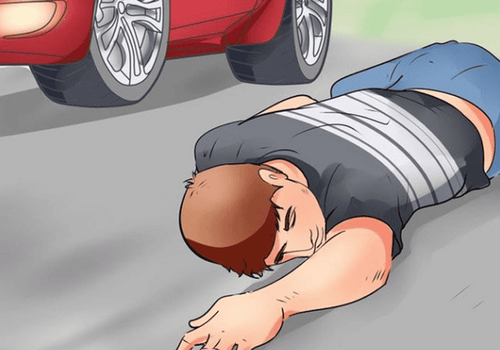
Three important tasks to do:
For individual victims: detect serious and life-threatening injuries For multiple victims: Triage immediate lifesaving treatments life of the victim Ensure a clear airway (take foreign objects, blood clots in the mouth to avoid obstruction due to blood sputum...), respiration - circulation and transport to a hospital qualified for diagnosis and treatment multiple trauma. Principles of treatment of traumatic shock caused by traffic accidents focus on three things: Restore vascular volume, give the patient oxygen and stop bleeding. Specifically:
Stop bleeding: Apply pressure if there is bleeding out. Garage for hemostasis in amputation, especially when other measures cannot stop bleeding. To avoid anemia, the tourniquet must be loosened periodically (every 45 minutes). Unstable pelvic fractures and vascular trauma are responsible for hemorrhagic shock. Immobilize the pelvis to reduce bleeding. Place the patient in a low-head-low-legged position. Fluid resuscitation (in facilities where an infusion line can be placed): Replace 2000ml of 0.9% NaCl solution through the peripheral route (16G catheter). In addition, high molecular weight solutions can be used to rehydrate patients. The goal of fluid resuscitation is to bring the mean blood pressure (MAP) to about 65 mmHg and systolic blood pressure to about 90 mmHg, except in the case of traumatic brain injury, where the systolic blood pressure is > 105 mmHg and the systolic blood pressure is > 120 mHg. In addition, in some cases of traumatic shock but without blood loss, to control traumatic shock not due to blood loss, it is necessary to transfer to the grassroots medical facilities such as district and district hospitals for first aid. This case cannot be handled in the community.
Traffic traumatic shock is a severe case that can be life-threatening if not diagnosed and treated early. Patients must immediately go to medical facilities for diagnosis and emergency treatment. Vinmec International General Hospital is a prestigious medical address so that patients can completely rest assured for examination and treatment at the Hospital.
The team of emergency doctors and nurses at the Emergency Department are intensively and professionally trained, able to receive and urgently handle severe and critical multi-trauma patients. There is always coordination with all other specialties such as musculoskeletal, spine, chest, abdomen... quickly. There are modern equipment in diagnosis and treatment. Vinmec International General Hospital has given emergency treatment and treated many cases in emergency cases, traffic accidents and injuries, severe blood loss shock. Accordingly, the examination, emergency and resuscitation procedures for patients at Vinmec are all carried out methodically and according to the correct procedure, providing a high treatment prognosis and quick recovery time.
Please dial HOTLINE for more information or register for an appointment HERE. Download MyVinmec app to make appointments faster and to manage your bookings easily.
Reference source: Department of Medical Examination and Treatment - Ministry of Health





